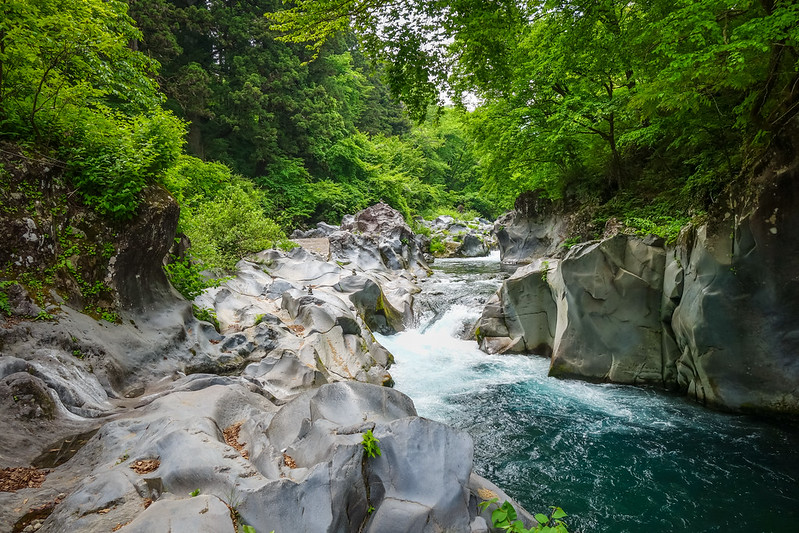
Discovering Nikkō
Nikkō (日光市 ) is one of the most picturesque cities in Japan. Nikkō, which means “sunshine” or “sunlight,” is situated in the mountains of Tochigi Prefecture. This popular destination for locals and tourists alike features several places that are part of the UNESCO World Heritage Site Shrines and Temples of Nikkō. Nikkō is known for its many hot springs, the mausoleum of shogun Tokugawa Ieyasu (founder and first shogun of the Tokugawa shogunate) and his grandson Iemitsu, the Futarasan shrine (a Shinto shrine founded by Shōdō Shōnin in 767), Rinnō-ji (complex of 15 Buddhist temple buildings), and Nikkō National Park, feautring some of Japan’s breathtaking waterfalls and trails.
Torii and pagoda. | Kageaki Smith
Shōdō Shōnin’s Influence
Shōdō Shōnin is one of the greatest Buddhist monks of the Heian period. He crossed the Daiya river and founded Rinnō-ji in 766 and the temple of Chūzen-ji in 784 which houses the thousand armed Kannon. It is believed that Shōdō Shōnin himself carved the statue from a single Katsura tree. The village of Nikkō expanded around these temples. The completion of Nikkō Tōshō-gū shrine, the final resting place of shogun Tokugawa Ieyasu in 1617, drew in more visitors to the developing mountain district. And as the number of people visiting Nikkō grew, new roads were made to allow easier access.
Nikkō’s Sacred Bridge. | Kageaki Smith
Expansion
The Meiji period saw the emergence of mountain resorts in Nikkō, popular for many foreign visitors and locals. The Japanese National Railways recognized the growth in visitors to Nikkō and the company began servicing the route in 1890 with the Nikkō Line. In 1929, the Tobu Railway also expanded to service a Nikkō Line. In 1889, Nikkō was incorporated into a town as part of Kamitsuga District and finally became a city in 1954 after it merged with the village of Okorogawa. In 2006, the city of Imachi, the town of Ashio, the town of Fujihara, and the village of Kuriyama further merged with the city of Nikkō.
Nikkō street scene. | Kageaki Smith
KCP students often experience the spectacular sights of Nikkō as part of their culture trip. It’s a great way to get to know the unique traditions and way of life of the people of Japan.



